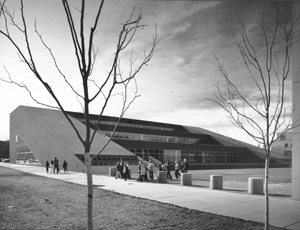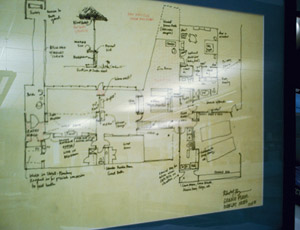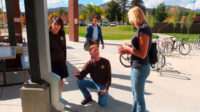Denver architect John B. Rogers will be remembered for his dynamic leadership as well as his dedication to his clients. But his legacy also includes a devotion to the firm he co-founded in the 1950s and to its current and future leadership.


Rogers, co-founder of Denver-based architecture firm RNL, died July 12 at the age of 88 of complications resulting from a long battle with lung disease.
Rogers served as president of RNL from 1955 to 1985, chairman of the board from 1985 to 1995 and as a board member from 1995 to 2009.
In 2009 he became an emeritus member of the board, continuing as an adviser and mentor to the firm. Under his leadership at RNL, the firm designed numerous commissions, including the Mountain Bell Denver Service Center, the Colorado History Museum and Justice Complex, the Police Administration Building, the Solar Energy Research Institute, and countless schools, churches, office and civic buildings, including the Wellington E. Webb Municipal office building.
At the age of 84, Rogers was actively creating new scholarships, participating in elementary school architectural education through the CAL Project for the Denver Architectural Foundation and working to change the way government solicits professional services.
“He was always taking on a new cause, and he continued to his last days to provide guidance and mentorship to the young architects at RNL through brown-bag seminars, and leadership training,” said Rich Von Luhrte, principal and board member, RNL.
WW II Veteran
Born and raised in Kansas in 1922 as one of six children, Rogers entered Kansas State University to study architectural engineering. His education was interrupted when he was called into service during World War II, where he served under Gen. Patton in the 89th Infantry Division from Luxembourg to Czechoslovakia, returning home a captain. He resumed his studies at KSU upon returning from the war.
It was during a postwar ski trip to Winter Park in 1947 that Rogers decided to move to Denver, where he found employment with Mark Musick and Temple Buell.
Though he left again to earn a bachelor’s degree in architecture from the University of Texas, he returned upon graduation in 1956 and founded his own firm, John B. Rogers Architect.
In 1961 Rogers joined forces with Jerry Nagel, and five years later through a merger, Rogers Nagel became Rogers Nagel Langhart Architects and Engineers. RNL has since grown to more than 250 people working among four offices in Denver, Los Angeles, Phoenix and Dubai.
While earning for his MBA at CU-Denver in 1984 at the age of 63, Rogers was asked to write a paper on retirement. He responded, “I can’t do it—I don’t ever plan to retire.” Rogers continued to contribute his leadership and creativity to the profession of architecture and the Denver community for another 25 years, growing his firm, giving his time to the American Institute of Architects and the Denver Architectural Foundation, serving on boards and working as an architect.



Post a comment to this article
Report Abusive Comment